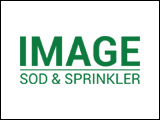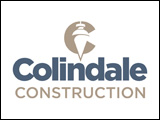Flood waters entering a vehicle can potentially result in extensive damage and cause additional inconvenience at an already stressful time. Manitoba Public Insurance is encouraging vehicle owners who have had water enter their vehicles to open a claim with the province’s public auto insurer.
“Water in a vehicle can potentially damage the mechanical and electrical components, which may result in the vehicle being damaged,” said Christine Martin, Vice-President, Customer Service & Chief Operating Officer, Manitoba Public Insurance.
Other vehicles at risk are fifth-wheelers/pull trailers, snowmobiles, ATVs and vehicles used only occasionally. While they may be parked in locations that are normally safe, overland flooding poses a real danger to them. Vehicle owners should review their policy guide, or speak to an Autopac agent to ensure their vehicles are fully covered.
Flooded roadways safety tips:
- Never attempt to cross a flooded road. When driving your vehicle in a flooded region, be on the lookout for flooding at highway dips, bridges and low areas.
- Better safe than sorry. Water levels are often much deeper than they appear and driving through can cause serious damage to your vehicle.
- Think about what you can’t see. Before proceeding on a road covered with water, remember that soft road surfaces can give way under a vehicle’s load and that large potholes are often concealed beneath the surface.
- Watch the current. A fast-flowing current over a roadway can cause a possible loss of vehicle control on non-paved surfaces. Proceed with caution!
- Plan ahead. If you have to travel in flooded areas, contact the Provincial Highways Department at 204-945-3704 or local RCMP for updated highway information.
Vehicle safety tips:
- Don’t attempt to start your vehicle if it has been submerged in water as you run the risk of unexpected system failure. Call Manitoba Public Insurance (204-985-7000 in Winnipeg; 1-800-665-2410 outside Winnipeg) to open a claim.
- Test your brakes after driving through deep water by driving slowly and applying brake pressure lightly. Other parts such as emergency brake cables, axels and electronic components should be dried and checked by a qualified professional as soon as possible.
- Don’t attempt to retrieve your vehicle from a flooded area until the water has receded and it’s safe to enter.
For specific information about Autopac coverage, including coverage for vehicles in transit and steps that can be taken to protect vehicles, customers should contact their Autopac agent or visit www.mpi.mb.ca.



